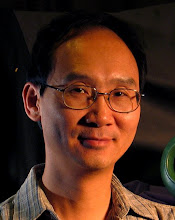Click Here to Bid
For doing a still life painting, the natural north light is the best light source. When so many artists building their studios, having a north window is the fundamental requirement for the project. The understanding has been proved that it is true. I used it, and absolutely believed it -------- well, till yesterday.
This painting was done with a regular halogen light, but I filtered the light with 4 layers of my blue tinted filter (I call that my North Light Filter). Yes, I used 4 of them. In result my illumination on the setup is a way cooler than the natural north light, and painting felt almost as lit by the moon light. This exercise made me realized suddenly that illumination of the still life setup can be a part of the artistic design. Just like moving objects in the setup can ends up different composition, altering light is also can be involved into the artistic concept of your painting project. In order to create the effect you want, you have the freedom of use any kind of light. You may use the north light, but you also can use candle light, tungsten light, fluorescent light, LED light, Neon light, and even laser light. You may filter your light, focus your light, diffuse your light, and use multiple lights. In a nutshell, light source can be changed according to your design.
However, one thing you need to be careful. No matter what light you use to illuminate your still life setup, You MUST (yes, MUST) illuminate your palette and canvas with the natural north light or close to the natural north light. Otherwise you painting will change color when it is viewed under the natural light.
Subscribe to:
Post Comments (Atom)


2 comments:
Thank you for the lesson on light. The more we look the more we see. North is also a sacred direction. A good light to see by.
This is a topic that has perplexed me since the beginning. Yes, you can alter your light effect while painting e.g. you can paint under a cool north light. Then you can achieve subtle color, especially creating lovely specific blues. Yet to hang that painting in any room's common light, which mainly will be a warm tone, those subtle colors cannot be seen. So I wonder if that light is mainly good to hone our painter's eye, more so than for the final 'look' of a work, which may vary depending on where it is hung.
Thank you for an interesting post.
Post a Comment